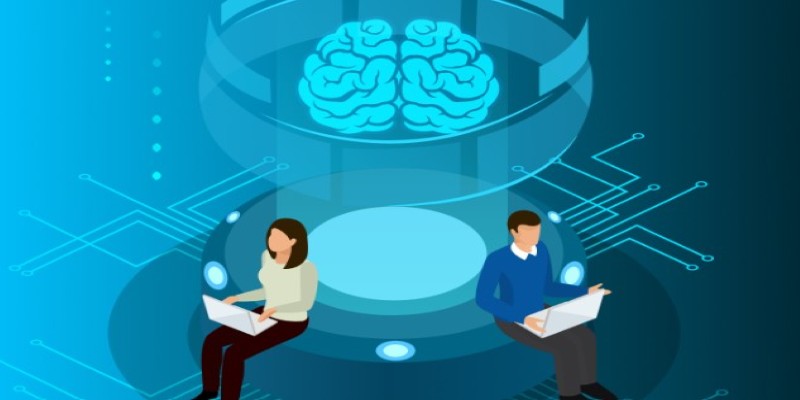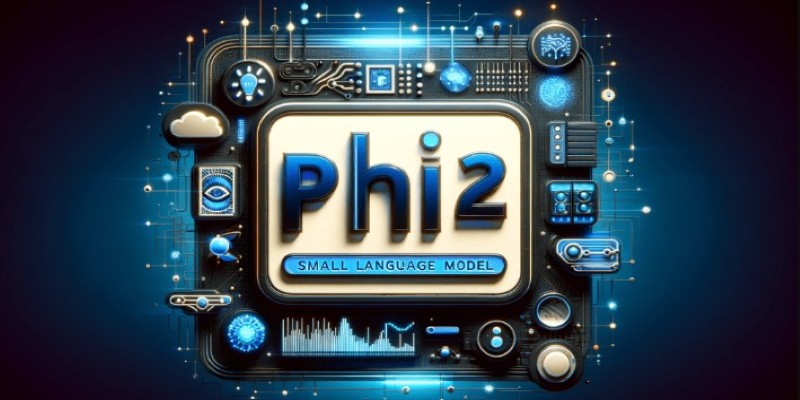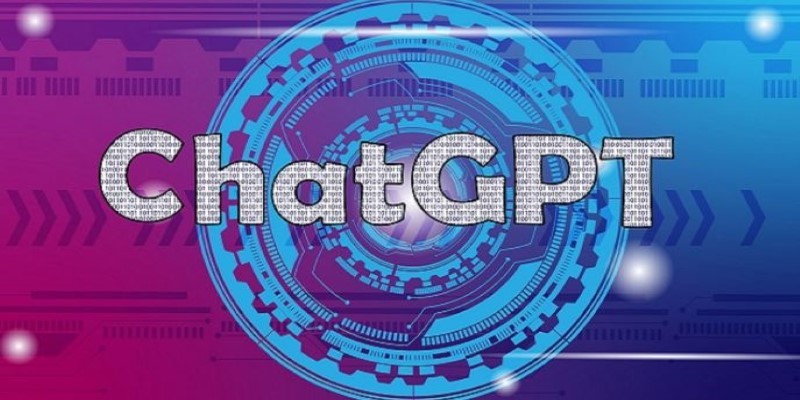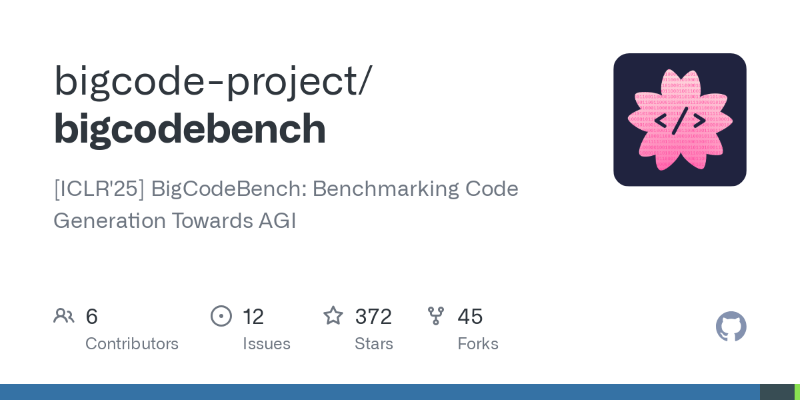Advertisement
The hype surrounding AI is loud, but beneath it, something interesting is happening—models are getting smaller, not bigger. Phi-2 is one of those new entries that flips the usual expectations. It doesn’t need billions of parameters to impress. In fact, Phi-2 is making people question how much size really matters in language modeling. It stands out because it does a lot with very little.
That’s not marketing; it's math, engineering, and clever training. This shift isn’t about breaking records on massive GPUs but about building something efficient, accessible, and fast. This article explores why Phi-2 matters and how it's changing the conversation.
Phi-2 is a compact language model released by Microsoft Research with just 2.7 billion parameters. That’s tiny when compared to GPT-4 or Gemini, but here’s the twist: Phi-2 performs on par with or better than models two to five times its size on many standard benchmarks. It uses a dense transformer architecture, which means it doesn’t rely on tricks like mixture-of-experts to scale. What makes it shine is the data and how it was trained.
Instead of feeding it a massive, noisy dataset scraped from every corner of the internet, researchers trained Phi-2 on a carefully selected, high-quality dataset. This dataset includes synthetic examples, textbook-style content, and instruction-tuned tasks. These give the model more focused learning signals and help it generalize better without bloating its size.
This disciplined training approach is more like teaching a student with clear, curated lessons instead of dropping them in a library with no guidance. And that student—Phi-2—has learned surprisingly well. It shows that if you clean the data, structure the learning, and avoid scale for scale’s sake, you can get strong results with fewer resources.
Phi-2 scores high in common NLP tasks, including reading comprehension, math reasoning, coding, and logical inference. In many tests, it competes with or outperforms larger models like LLaMA-2 7B and Mistral 7B. Even in math and code generation—two areas where large models often dominate—Phi-2 holds its ground. This is where the phrase “language models with compact brilliance” fits: it's not about flashy results but efficient execution.

Part of its strength lies in its training data. Instead of noisy web data that needs heavy filtering, the dataset for Phi-2 includes synthetic prompts crafted to challenge and refine the model’s reasoning. This leads to fewer hallucinations and stronger task-specific performance.
Another important trait is that Phi-2 generalizes better than expected. It can adapt to tasks it wasn’t explicitly trained on. That’s not common in smaller models, which usually depend on heavy fine-tuning or extensive instruction datasets to stay relevant.
So, how does this affect users or developers? Smaller models, such as Phi-2, are easier to deploy. They fit on consumer-grade GPUs, run faster, and are less expensive to maintain. That makes them good candidates for edge devices, internal business tools, and use cases where you don't want to rely on cloud infrastructure all the time.
The core idea behind Phi-2 is simple: better data beats more data. Microsoft’s team adopted a training-first approach, treating the process more like curriculum design than raw data consumption. Phi-2's dataset included educational materials, synthetic reasoning problems, and prompt engineering strategies. Instead of going broad, they went deep.
This shows up in how Phi-2 handles logical reasoning and coding. For example, in the HumanEval benchmark for Python coding, Phi-2 performs at levels typically seen in models much larger. This is a big deal. Smaller models usually struggle with code because they don't have enough exposure to structured programming examples. Phi-2 learned through concentrated practice.
This method of dataset curation also reduces the risk of toxic or biased outputs. When you cut out low-quality content, you reduce the model’s exposure to problematic patterns. That doesn’t make Phi-2 flawless, but it does make it more predictable and safe for use in applications like education, healthcare, or customer service tools where precision matters.
Instruction tuning played a big role in shaping Phi-2’s behavior. Instead of simply dumping data into the model and hoping for coherence, the training team used structured prompts to guide its understanding. This lets the model learn task formats more clearly and respond with higher accuracy. It’s the difference between memorizing random facts and being able to apply knowledge in context.
Phi-2 isn’t just a lab experiment. It’s a signal that the AI community is getting smarter about how it trains and deploys models. Large language models have dominated headlines, but they come with cost, latency, and privacy concerns. Phi-2 opens up new ways to think about design.

Its size means faster inference and lower energy consumption. That matters for companies trying to integrate AI into their workflows without adding high cloud bills or worrying about response times. Phi-2 is a practical choice for enterprise applications that need fast, repeatable output rather than showy chatbot flair.
It’s also useful in academic settings. Students and researchers can run it on local machines or school servers. This democratizes access. Not every institution can afford to train or even fine-tune massive models. But Phi-2 shows that small can be smart.
Another point is transparency. Microsoft has released weights for research use, which opens the door for reproducibility and extension. Developers can study how Phi-2 was built, explore how it behaves under different conditions, and even train similar models on their data.
The rise of Phi-2 suggests a shift back toward clarity and focus. It doesn’t have to be a 70-billion-parameter beast to be helpful. In fact, its smaller size makes it more understandable and easier to control. That’s good for safety, governance, and deployment at scale.
Phi-2 shows that smaller models when trained with purpose and precision, can match or exceed the performance of much larger systems. Its efficiency, speed, and lower resource demands make it a smart choice for real-world use. By focusing on quality over quantity, Phi-2 challenges old assumptions in AI. It's not just a technical achievement—it’s a sign that compact, well-built models may shape the next phase of language model development.
Advertisement

Compare ChatGPT vs. HuggingChat to find out which AI chatbot works better for writing, coding, privacy, and hands-on control. Learn which one fits your real-world use

How to use permutation and combination in Python to solve real-world problems with simple, practical examples. Explore the built-in tools and apply them in coding without complex math

How to use the Python time.sleep() function with clear examples. Discover smart ways this sleep function can improve your scripts and automate delays

Samsung launches world’s smartest AI phone with the new Galaxy S24 series, bringing real-time translation, smart photography, and on-device AI that adapts to your daily routine

Thousands have been tricked by a fake ChatGPT Windows client that spreads malware. Learn how these scams work, how to stay safe, and why there’s no official desktop version from OpenAI

Looking for the best AI image enhancers in 2025? Discover 10 top tools that improve image quality, sharpen details, and boost resolution with a single click

Hugging Face and FriendliAI have partnered to streamline model deployment on the Hub, making it faster and easier to bring AI models into production with minimal setup

What makes BigCodeBench stand out from HumanEval? Explore how this new coding benchmark challenges models with complex, real-world tasks and modern evaluation

IBM AI agents boost efficiency and customer service by automating tasks and delivering fast, accurate support.

Gemma 3 mirrors DSLMs in offering higher value than LLMs by being faster, smaller, and more deployment-ready

Looking for the best cloud GPU providers for 2025? Compare pricing, hardware, and ease of use from trusted names in GPU cloud services

Google debuts new tools and an agent protocol to simplify the creation and management of AI-powered agents.